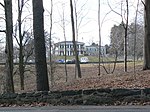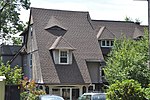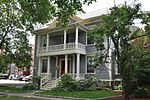Brookline Town Green Historic District
Brookline, MassachusettsColonial Revival architecture in MassachusettsHistoric districts in Norfolk County, MassachusettsHistoric districts on the National Register of Historic Places in MassachusettsItalianate architecture in Massachusetts ... and 3 more
NRHP infobox with nocatNational Register of Historic Places in Brookline, MassachusettsUse mdy dates from August 2023

The Brookline Town Green Historic District encompasses the historic colonial heart of the town of Brookline, Massachusetts. Centered on a stretch of Walnut Street between Warren and Chestnut Streets, this area is where the town's first colonial meeting house and cemetery were laid out, and was its center of civic life until the early 19th century. The district was listed on the National Register of Historic Places in 1980.
Excerpt from the Wikipedia article Brookline Town Green Historic District (License: CC BY-SA 3.0, Authors, Images).Brookline Town Green Historic District
Welch Road,
Geographical coordinates (GPS) Address Nearby Places Show on map
Geographical coordinates (GPS)
| Latitude | Longitude |
|---|---|
| N 42.326666666667 ° | E -71.131388888889 ° |
Address
Welch Road 58
02445
Massachusetts, United States
Open on Google Maps










